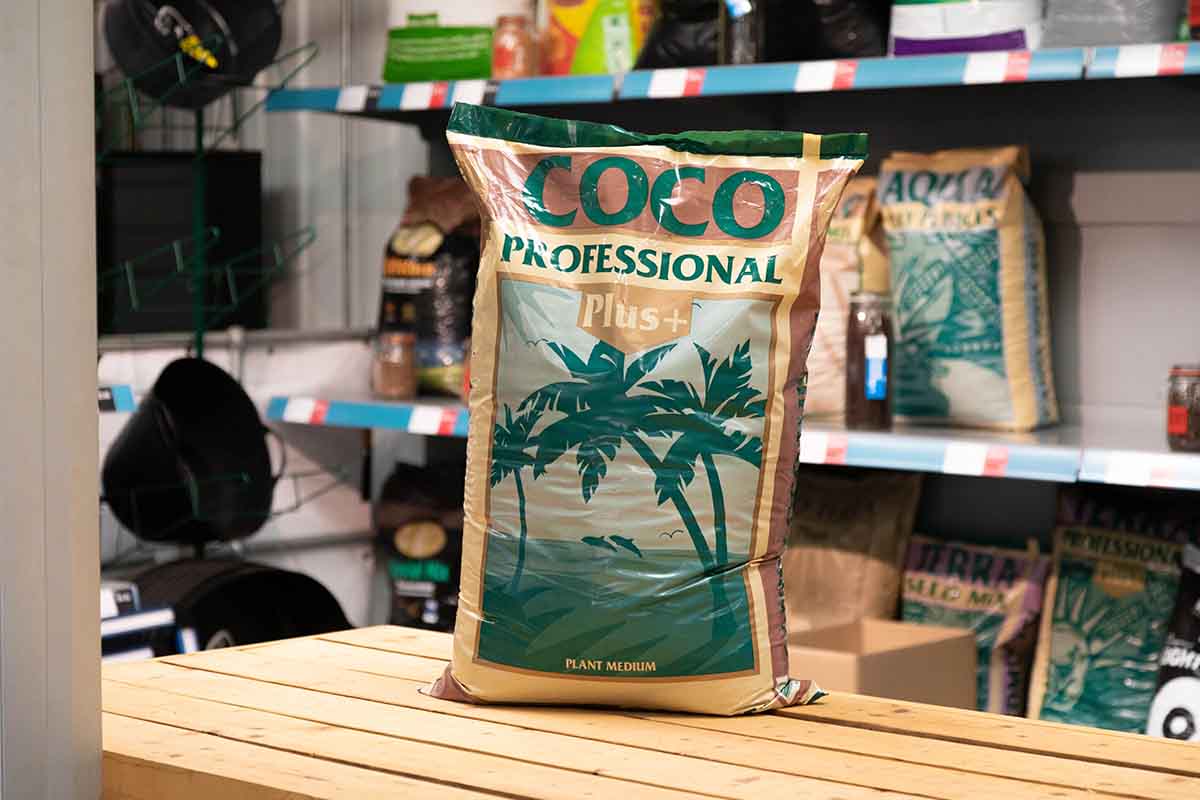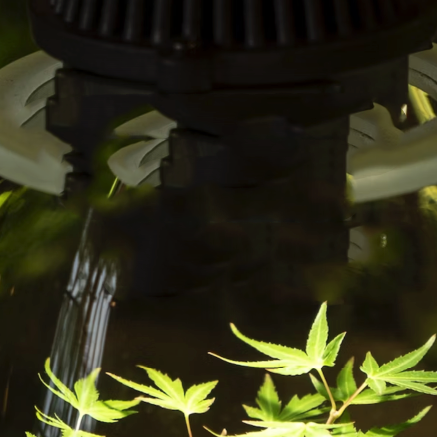Why Choosing the Right Grow Media Is So Important
Choosing a medium is a very hard and daunting task as it plays a huge role in your crops success. At One Stop, we like to make things nice and easy for you, so here’s a breakdown of the different types of media, what to expect from them, and some tips and tricks to help you along your way!
So, let’s start with Coco. Coco is a fan favourite at One Stop for a few reasons; it gives you incredible control over your plants' nutritional intake, alongside being a fantastic hub for beneficial microbes and additives to live. One of our favourites is Canna Coco Professional +.
Growers have been trusting Pro + for years, and it delivers phenomenal results. It comes with the RHP seal of approval, which is awarded to agricultural and horticultural substrates for their excellent performance. It also gives you ideal water and air retention for healthy roots and fast plant growth.
As we’ve previously mentioned, coco is also fantastic for those looking at using microbial power in their grow, products such a Mammoth P will love the coco and will help to bring out the best in your plants.
Don’t forget that plants grown in coco need to be fed with coco-specific, mineral based feeds, like Canna Coco A&B. You’ll also need to use an EC meter, which provides accurate info on the strength of your nutrients, as well as a pH meter, which indicates the acidity or alkalinity of your nutrient solution.
Growing in soil allows you to let nature do a lot of the hard work for you! Soil naturally helps to buffer pH levels and provides the perfect environment for beneficial fungi and bacteria. Because of soils pH buffering qualities, it makes it fantastic for beginner growers due to mistakes not being as detrimental to your grow. Due to it retaining moisture, it also does well during any dry periods, again, a fantastic trait for those who new growers.
A fantastic soil to get into is Plant Magic's Soil Supreme.
Soil Supreme is a light soil mix which promotes rapid root growth. It features a blend of sphagnum peat and fytocell that’s enriched with organic growth stimulants, promoting rapid growth in your plants. It’s light and airy mix makes it excellent for draining and root zone aeration, giving your plants access to the nutrients they need.
When you’re first potting your plants up I the soil, be careful of over compacting the medium as it can hamper your root development. When you add it loosely, the airy structure of soil allows your roots tov penetrate through easily, speeding up growth.
Another fantastic tip is If you’d like to use soil in a growing system, adding perlite or seramis at 20-30% will provide you with a media mix more suited to multiple plant feeds per day. This will help to stop your media becoming waterlogged.
Clay pebbles are the medium for choice for pure hydroponic systems. The air gaps between the pebbles allow nutrients to drain freely, giving incredible and unbeatable oxygenation throughout your roots. Growers are truly in control of every detail when growing hydroponically with clay pebbles, so this medium is one for the experienced growers out there. You need to be on top of your feeds, pH and EC to maximise your yields, but if you do this correctly, it’s unbeatable.
Hydrocorn pebbles have a much more uneven shape that your regular pebbles, giving a larger surface area with its course surface and pores. This allows them to retain water whilst draining freely, keeping the roots super-oxygenated. We’d recommend this in an DWC system!
If you can master growing in clay pebbles, your yields will reflect the time and care you've put into it.
What Do The Pros Think?...
We asked Gareth Hopcroft, the mind behind Ecothrive to discuss with us the importance of choosing a media which suits your style of growing and what to take into consideration. Find out what he had to say below...
Q: If you’re new to growing and looking to set up a simple hand-watered grow, what would you recommend?
A: Growing mediums have two properties you can measure that tell you what they are best suited for; air filled porosity (AFP) and water holding capacity (WHC). If a growing medium has a high water holding capacity it will be ideal for hand-watering. The high WHC provides a large reserve the plant can access, so after a good watering you can rest assured that the medium will have enough water to last at least 24 hours. Good mediums for hand watering are 100% Coco and Soil. These mediums have a moderate to low air-filled porosity, between 5-10%.
Q: That’s interesting! So, if you were to go with a medium that had a higher air content, would growth be better?
A: Absolutely. Air-filled porosity is the available air space within the medium, if you can increase the AFP the root system will be healthier, and the plants will develop at a faster A good example of this is coco and perlite mixes, where blending 30% perlite into the coco provides a 25% increase in AFP while only lowering the water holding capacity by 15%. 70/30 Coco perlite mixes can be used for hand watering during the cooler months but are best suited for drip irrigation and passive watering systems.
Q: What about mediums for hydro systems, where you want to water frequently?
A: Growing mediums with a low WHC needs watering multiple times a day and are most suited to systems. 60/40 clay pebble/coco mixes are draining easily, have a low WHC and great for drip irrigation or flood and drain systems. If you want a medium with a very low water holding capacity for very frequent or constant irrigation, 100% clay pebbles are a good option and is often the choice for flood and drain, or recirculating drip systems.
We hope you've found this blog useful! If you're ever struggling with your medium, drop us a message or call through on 01782 749955 and we can help you!
Happy Growing

